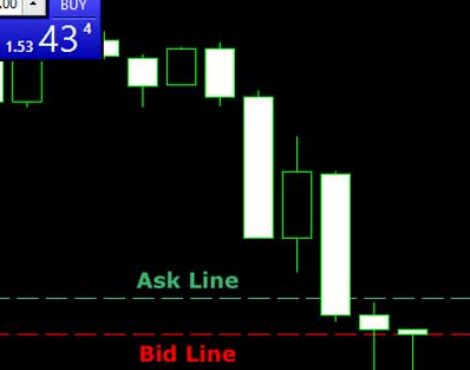Market analysis is a crucial aspect of any successful business strategy. It’s the process of understanding the dynamics of the market, identifying opportunities and threats, and making informed decisions based on data-driven insights. In this article, we will delve into the secrets of market analysis, exploring various techniques and strategies that can help businesses stay ahead in the competitive market landscape.
Understanding Market Analysis
Market analysis is a comprehensive assessment of the market in which a business operates. It involves looking at various factors, such as market size, growth rate, customer demographics, and competitive landscape, to determine the potential for success. By understanding the market, businesses can tailor their products and services to meet the needs of their target customers.
Market analysis also helps businesses identify areas for improvement and growth. By analyzing market trends and consumer behavior, businesses can make informed decisions about product development, marketing strategies, and pricing.
Ultimately, market analysis is about gaining a deeper understanding of the market to make strategic decisions that will drive business success.

The Importance of Data Collection
Data collection is a critical component of market analysis. Without accurate data, businesses cannot make informed decisions. There are several methods for collecting data, including surveys, interviews, and observation.
Data collection can help businesses understand their customers better. By collecting information about customer preferences, behaviors, and demographics, businesses can tailor their products and services to meet their needs.
Moreover, data collection can help businesses identify new market opportunities. By analyzing customer feedback and market trends, businesses can identify areas for growth and expansion.
Identifying Market Trends
Identifying market trends is key to staying ahead in the competitive business world. Trends can indicate changes in customer preferences, shifts in the competitive landscape, and emerging technologies.
By staying on top of market trends, businesses can make strategic decisions about product development and marketing. For example, if a trend indicates a growing preference for eco-friendly products, a business can adjust its product offerings to meet this demand.
Market trends can also help businesses identify potential threats. By staying informed about changes in the market, businesses can take proactive steps to mitigate risks.

Analyzing Consumer Behavior
Understanding consumer behavior is essential for businesses to tailor their products and services to meet their customers’ needs. Consumer behavior analysis involves looking at factors such as purchasing habits, brand loyalty, and decision-making processes.
Consumer behavior analysis can help businesses identify their target customers and develop marketing strategies that resonate with them. By understanding what motivates customers to make a purchase, businesses can create targeted campaigns that drive sales.
Additionally, analyzing consumer behavior can help businesses identify areas for improvement in their products or services. By listening to customer feedback and analyzing purchasing patterns, businesses can make adjustments to better meet their customers’ needs.
Competitive Analysis Techniques
Competitive analysis is the process of evaluating the strengths and weaknesses of competitors in the market. There are several techniques for conducting competitive analysis, including SWOT analysis, Porter’s Five Forces, and benchmarking.
SWOT analysis involves looking at the strengths, weaknesses, opportunities, and threats of competitors. By understanding these factors, businesses can identify areas where they have a competitive advantage and areas where they need to improve.
Porter’s Five Forces is a framework for analyzing the competitive forces in a market, such as the threat of new entrants, the bargaining power of suppliers, and the intensity of competitive rivalry. By using this framework, businesses can develop strategies to overcome these forces.
Benchmarking involves comparing a business’s products, services, or processes to those of its competitors. By identifying areas where competitors are performing better, businesses can make improvements to stay ahead in the market.
Market Segmentation Strategies
Market segmentation is the process of dividing a market into distinct groups of customers with similar needs or characteristics. Businesses can use various strategies for market segmentation, including demographic, psychographic, and behavioral segmentation.
Demographic segmentation involves dividing the market based on factors such as age, gender, income, and education. By understanding the demographics of their target customers, businesses can create products and marketing campaigns that appeal to them.
Psychographic segmentation involves looking at customers’ values, lifestyles, and personalities. By understanding the psychographics of their target customers, businesses can create more personalized marketing campaigns.
Behavioral segmentation involves dividing the market based on customers’ purchasing habits, brand loyalty, and usage patterns. By understanding these behaviors, businesses can tailor their products and services to meet their customers’ needs.
Predictive Market Modeling
Predictive market modeling is a technique for forecasting future market trends and customer behavior. It involves using statistical models and data analysis to make predictions about the market.
Predictive market modeling can help businesses make data-driven decisions about product development, marketing, and pricing. By forecasting future trends, businesses can stay ahead of the competition and make proactive decisions.
Moreover, predictive market modeling can help businesses identify potential risks and opportunities. By using predictive models, businesses can develop strategies to mitigate risks and capitalize on opportunities.

Making Data-Driven Decisions
Making data-driven decisions is essential for businesses to succeed in a competitive market. By using data analysis and market research, businesses can make informed decisions about product development, marketing, and pricing.
Data-driven decisions can help businesses stay ahead of the competition and adapt to changing market conditions. By using data to inform their strategies, businesses can make decisions that are based on facts rather than assumptions.
Moreover, making data-driven decisions can help businesses improve their customer satisfaction and loyalty. By using data to understand their customers’ needs and preferences, businesses can tailor their products and services to meet their expectations.
Conclusion
Market analysis is an essential tool for businesses looking to stay ahead in the competitive market landscape. By understanding the market, identifying trends, analyzing consumer behavior, conducting competitive analysis, segmenting the market, and making data-driven decisions, businesses can make informed decisions that drive growth and success. Unlocking the secrets of market analysis may seem daunting, but with the right strategies and techniques, businesses can gain valuable insights that will help them succeed in any market.



